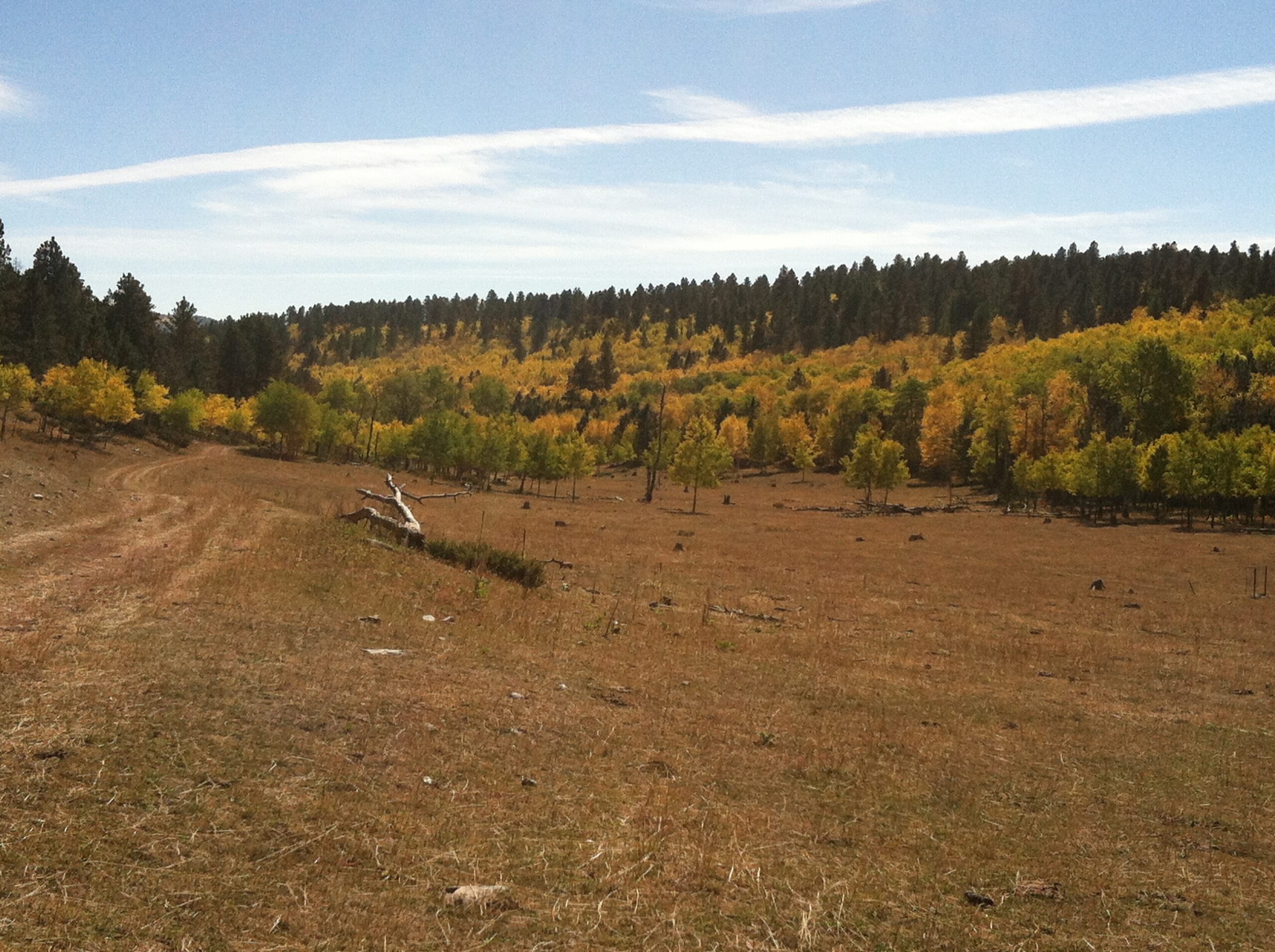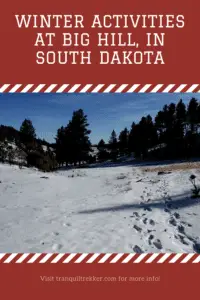There is a great, under-appreciated place to view fall colors in the Black Hills, Old Baldy, near Spearfish, South Dakota! While it’s beautiful in the fall, the Trekkers enjoy it throughout the year as it’s never crowded.
Where is the Old Baldy Trailhead?
The Old Baldy trailhead is on Tinton Road, about halfway between Spearfish and Lead. You can get there from either town.
From Spearfish, the easiest way is to take Exit 8 off of I-90, for McGuigan Road. Take this south to the T-intersection with Tinton Road, and then turn right towards the forest. Take Tinton Road about 10 miles to the trailhead.
If you’re coming from Lead, take US 85 west (towards Wyoming) for about 18 miles out of Lead, until you reach the turnoff for Tinton Road. Take Tinton Road about 18 miles to the trailhead.
The road is gravel, however, it is well-graded. As long as you don’t mind your car getting dusty, any passenger vehicle can handle it under good conditions. In the winter, though, it is rarely plowed past the Iron Creek Lake turnoff when coming from Spearfish. A high-clearance, 4WD vehicle is often needed to drive this road under those conditions, and even then it is often impassable unless you’re on foot, skis, or are powered by a snowmobile.
I’m not sure if this area has been getting more snow in recent years (this part of the Hills receives some of the largest amounts of snow during the winter); or if the Forest Service just isn’t maintaining Tinton Road past the Iron Creek Lake turnoff; or if they’re intending it more for snowmobile usage. But whatever the reason, the road has been almost impassible for much of the winter, lately. One time, we got pretty stuck attempting to reach the trailhead (we were VERY fortunate we carry recovery gear).
What you will see on the Old Baldy Trail
This loop trail is around six miles in total length, with an additional spur to the Mt. Baldy summit that adds a little over 1.5 miles to the total hike. There is a “lake” that is signed, though I use that term VERY loosely. We’ve never actually seen any water in it. It should be called “Green Lake” because it looks like a meadow! There is a small stream that runs through the “lakebed”, but mostly you only see grass and cows near here. 😋
A word of warning, beware of the cows, as well as their “leavings”. 🤥 The National Forest leases this area to local ranchers, so you can find cows anywhere and everywhere near here during the summer.
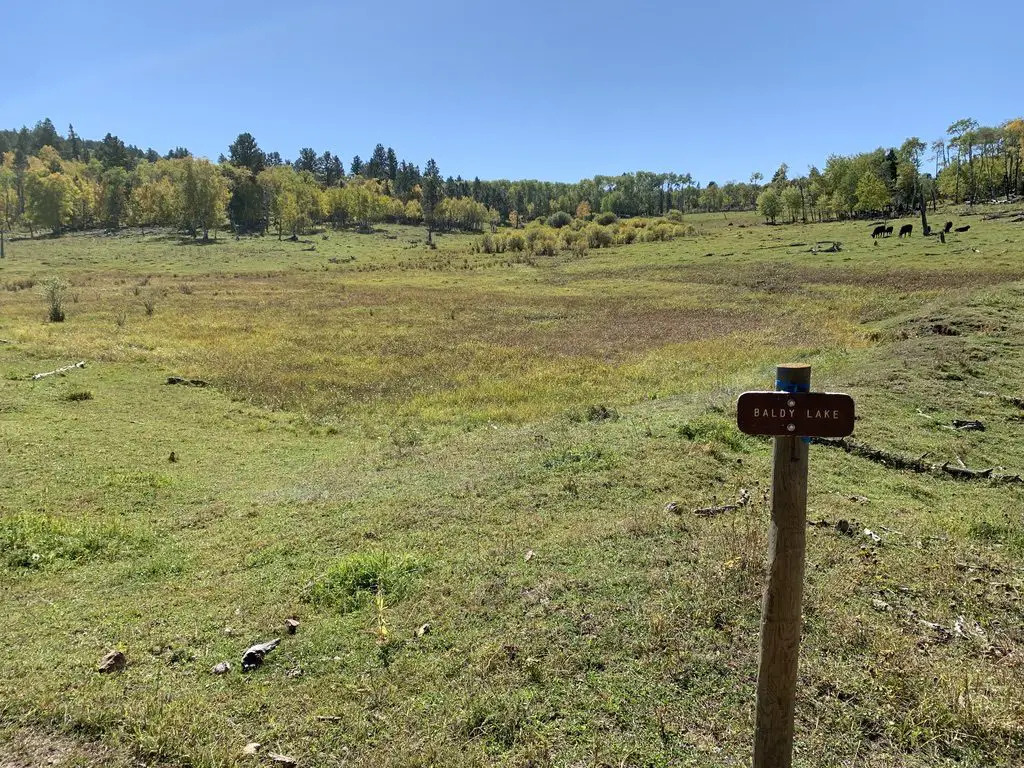
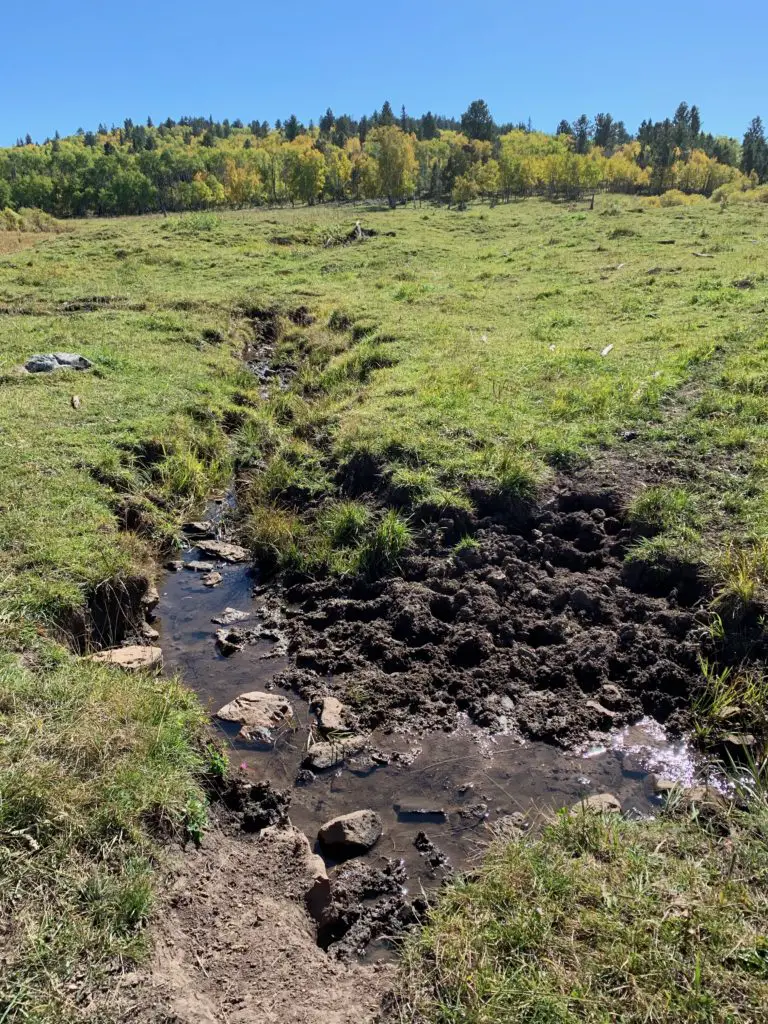
The trail winds through pine forests with aspen glens dispersed amongst them. It also traverses the edges of a few meadows and offers spectacular views of the surrounding landscape. This area is especially pretty in fall when the yellow of the aspen and green of the pine complement each other beautifully, especially as contrasted against the clear blue, Black Hills sky!
Besides the main loop, there is a spur of the Rimrock Trail that can be accessed from here, as well. This side trail will take you to the rim of Spearfish Canyon. These are all prime places to enjoy the fall colors the Northern Hills are known for, without having to deal with the crowds you’ll find in the Canyon below.
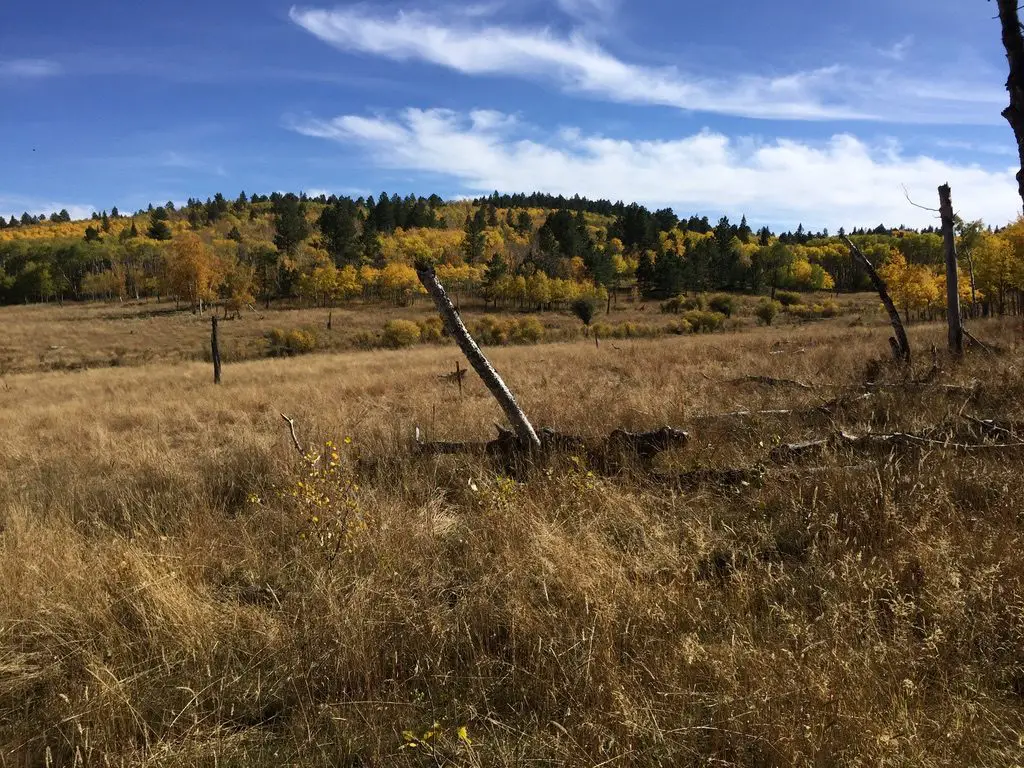
The trail options here are really just one loop (other than the spur to the Rimrock Trail). If you go right at the fork, heading counterclockwise, you’ll hit the GORGEOUS aspen glen first, traversing the only real switchbacks found on the trail on the downhill.
If you do choose this route, the return trip is a little steeper, but I think it’s easier. There is more open space, so there is also more breeze if you’re warm. The open areas also provide you with INCREDIBLE views of the surrounding mountains and prairie. However, if it’s sunny in the summer, this area could be hotter as there is less shade…
Regardless of which fork you choose, the “lake” and the turnoff to the summit of the mountain are at the bottom of the hill. You know what this means! No matter which fork you pick, you have to climb back up the WHOLE return trip! 😛
If you start off on the left branch of the trail, going clockwise, you’ll hit the more open area of the loop on your descent. Facing this direction, you’ll actually be provided with more expansive views of the surrounding countryside.
Unfortunately, this will mean you have to face the “spirit-crushing switchbacks” (I HATE switchbacks!) through the aspen glen, on the way back up the hill. Because the trees in this area are thicker, it is also more shaded during the summer months. HOWEVER, the denser foliage also means there is less of a breeze…phew! Decisions, decisions!
Either way the aspen glen, especially, is INCREDIBLY beautiful in the fall months, not to mention the surrounding hillsides that are ablaze with yellow from all the aspen trees. The aspen glen is my favorite of the whole trail in the fall.
Author’s note: the American Indians who originally gave the Black Hills their name called them this because the pine forests made the Hills look dark from afar. In recent years, the pine trees have been decimated by pine beetles and some wildfires. Aspen trees grow EXTREMELY WELL in their wake. One wonders if a few hundred years from now, a more appropriate name for these hills may be the Aspen Hills, or the Yellow Hills–the color all the aspens turn in the fall…
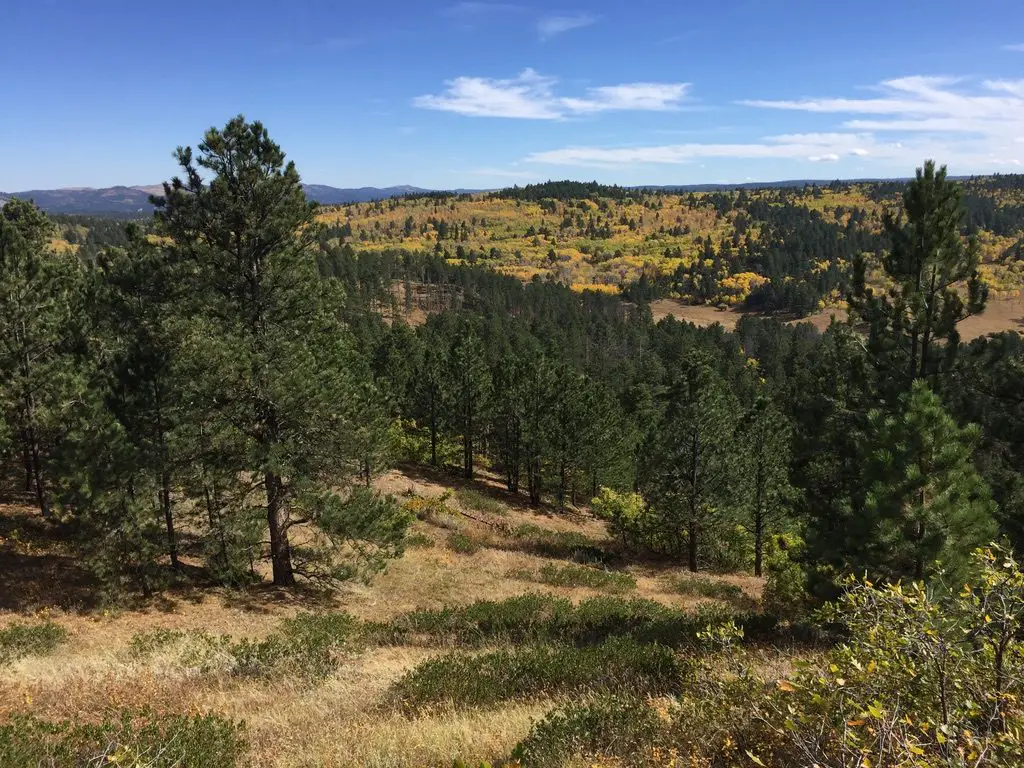
These days, if you visit this location, you will see some extensive storm damage. Multiple tornadoes actually went through here in recent summers! That’s a rare occurrence in the Black Hills!
One of the storms was especially nerve-racking for me, as the Trekker Parental Units (and Extended Family) were staying at a rental house near Lead at the time. They were outside the tornado’s track–thankfully–but only by about a mile. 😮 Fortunately, the baseball-sized hail that the storm dropped missed them as well! Helplessly watching that tempest on the radar, while I was sitting in the sunshine over an hour away, was enough to give me a few gray hairs!
When is the best time of year to visit the Old Baldy trail?
The trails are perfect for both summer and winter recreation IF you can reach them in the winter. If Tinton Road is passable as far as the trailhead when there is snow on the ground, the actual site can be hard to find as the sign is often buried by snow. Also, there is usually very little parking as the lane to the parking lot is not plowed.
So, you must make do with parking along the side of the road. In the past, we have come here multiple times to snowshoe or ski. Unfortunately, we haven’t been able to reach the site the last several years.
The difficulty in accessing the trailhead during the winter months is really a shame because it is GORGEOUS under the cover of snow. The sunbeams shine through the bare branches of the aspen trees while the pristine, white snow, and dark-brown bark, contrast perfectly with the dark green pine trees and blue sky. Make sure to wear layers, as it can get pretty windy up here since it’s near the top of the mountain.
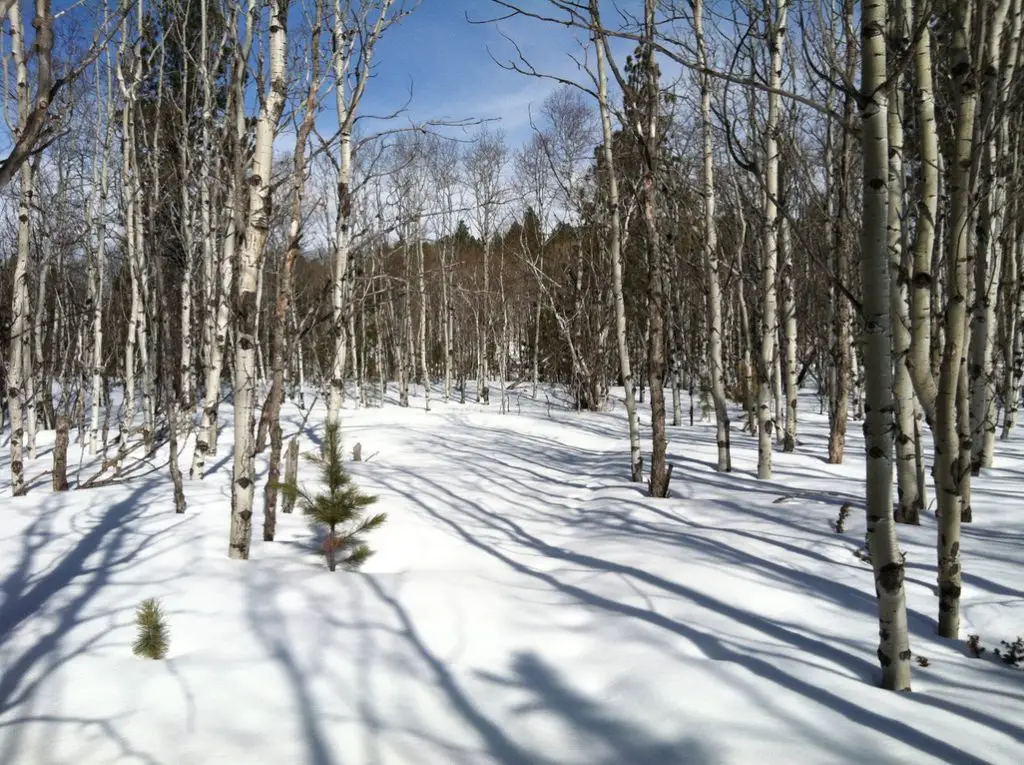
This is a fun trail for mountain biking as well, heading downhill. 😋 Going back up can be a bit of a pain, especially if you ascend via the eastern leg of the loop, through the switchbacks. Both hikers and bikers need to be watchful for each other as there are several blind curves and collisions can happen if the bikes round them too quickly.
Horses are also allowed on this trail. It is imperative that bikers watch for these equines, who could shy and throw a rider, or hurt themselves (or the biker) if a bike came racing around a corner and startled them.
If you’re looking for a fine place to view fall colors in the Black Hills, and you’d like to avoid the usual crowds, check out Old Baldy! You’ll be glad you did!
Have you ever tried this trail in any season? Tell me about your experience in the comments!
Did you enjoy reading this post? Pin it!
Like what you read here today? Please feel free to leave a comment, like or share this post! Add your email at the bottom of the page, or the sidebar to the right, to be notified when a new post is published. By signing up for the email list, you will also receive a free copy of the Tranquil Trekker’s Top 10 Tips of Trekking Do’s and Don’ts!
You can also follow the blog on social media by clicking the links below!
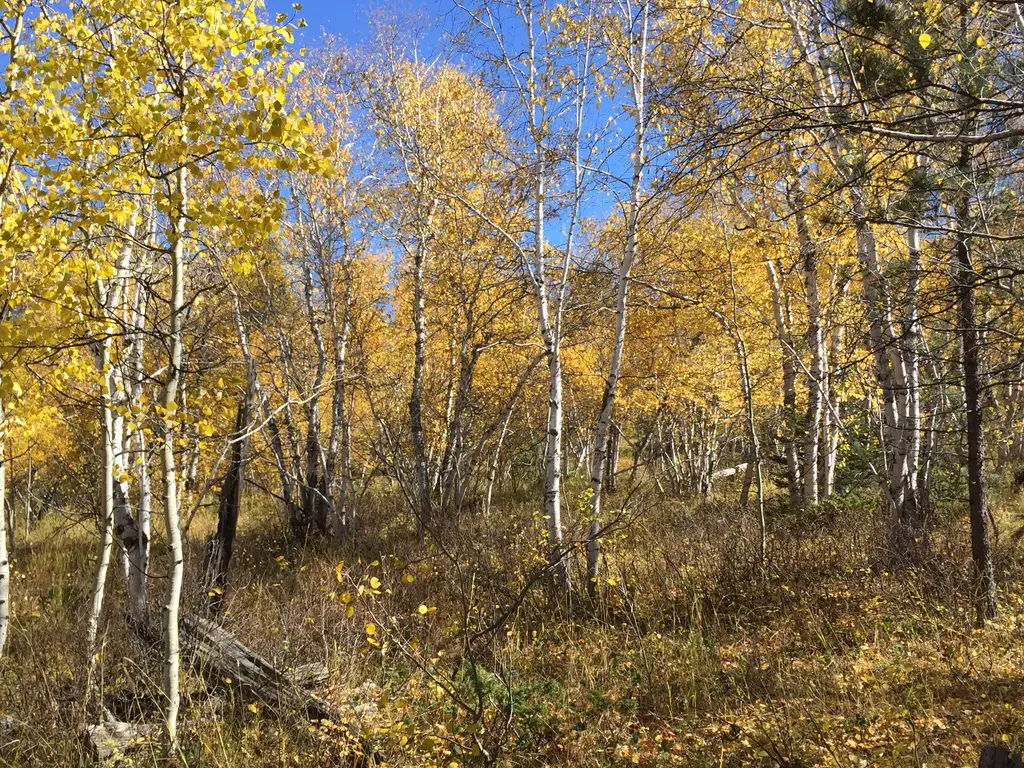


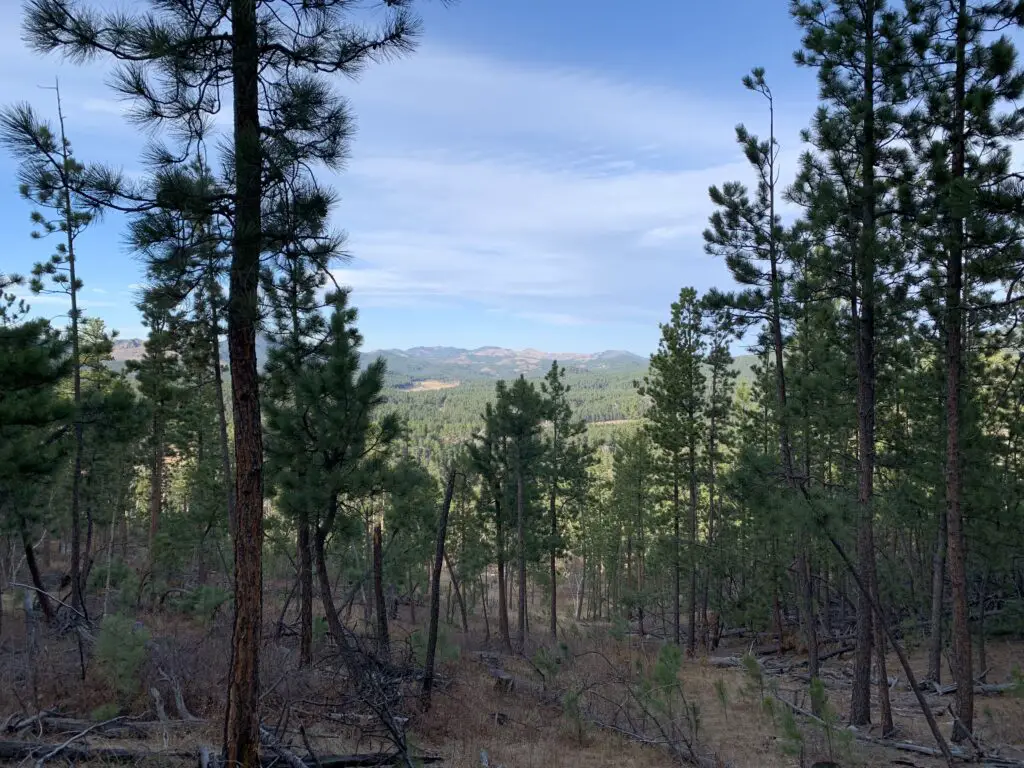
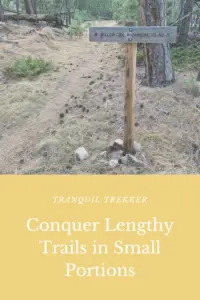
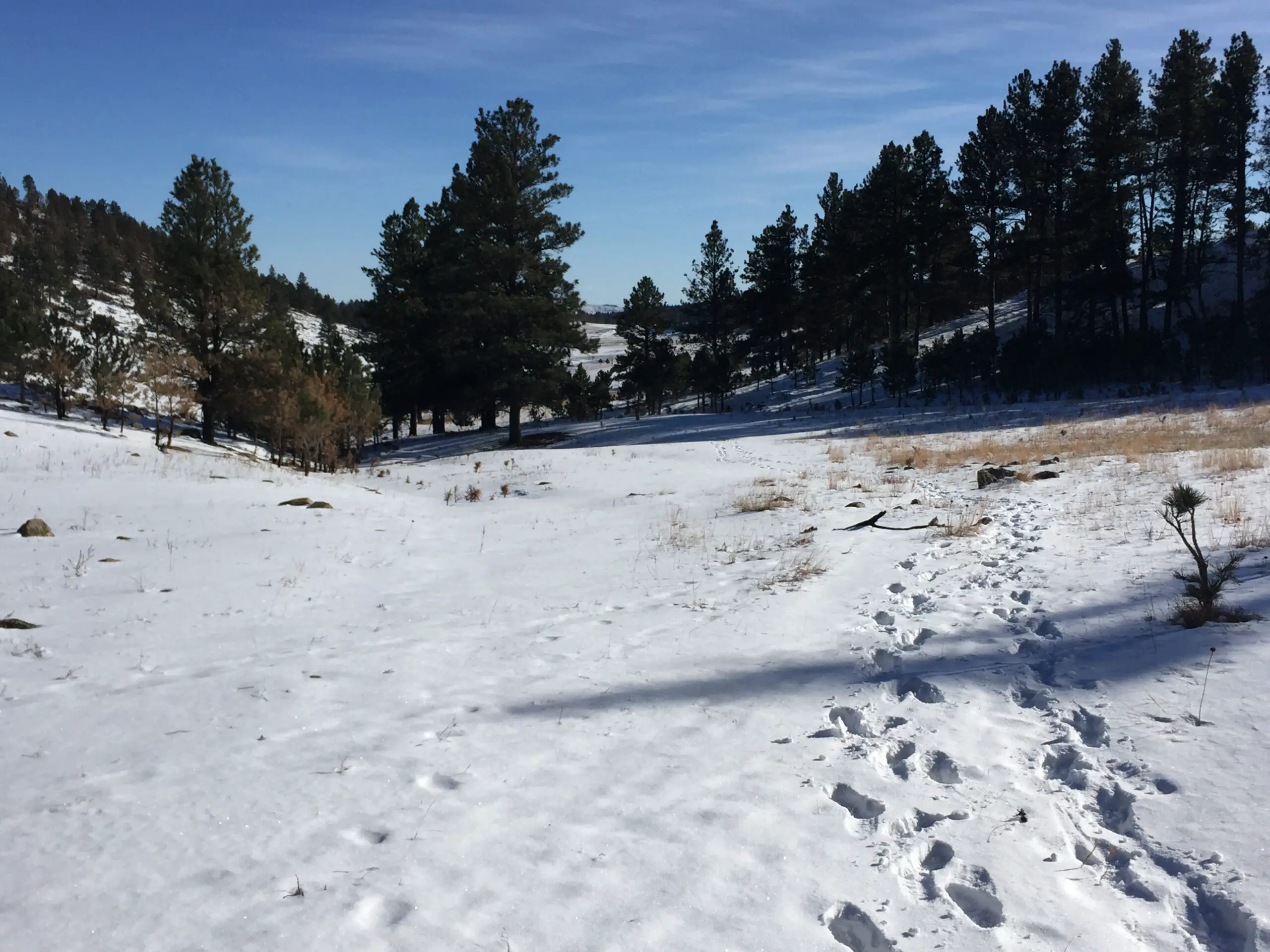
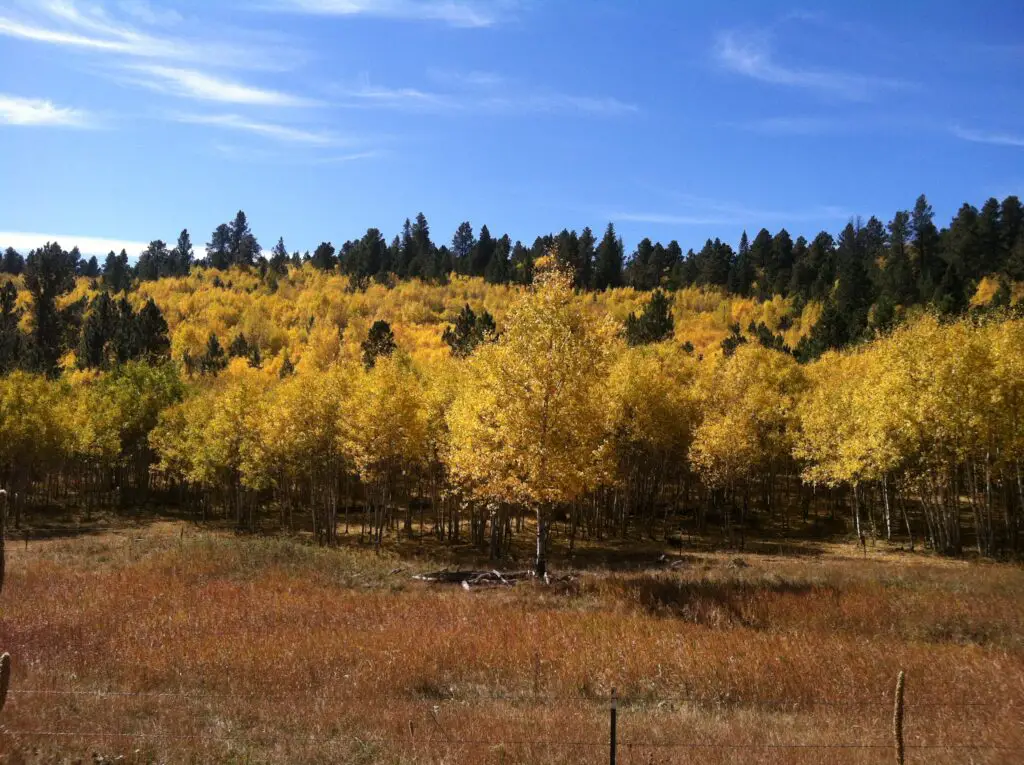
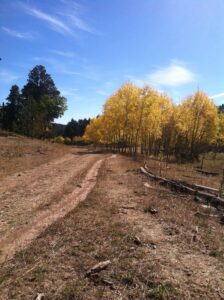 For beginners, I strongly recommend starting with the initial Loop A. It’s a short, groomed trail that just goes in a small circle around a meadow/forested area near the front of the Big Hill trail network. It’s fairly flat with only a few short rises and dips and doesn’t offer much opportunity for falls (though, full disclosure, I have fallen here 😝).
For beginners, I strongly recommend starting with the initial Loop A. It’s a short, groomed trail that just goes in a small circle around a meadow/forested area near the front of the Big Hill trail network. It’s fairly flat with only a few short rises and dips and doesn’t offer much opportunity for falls (though, full disclosure, I have fallen here 😝). 